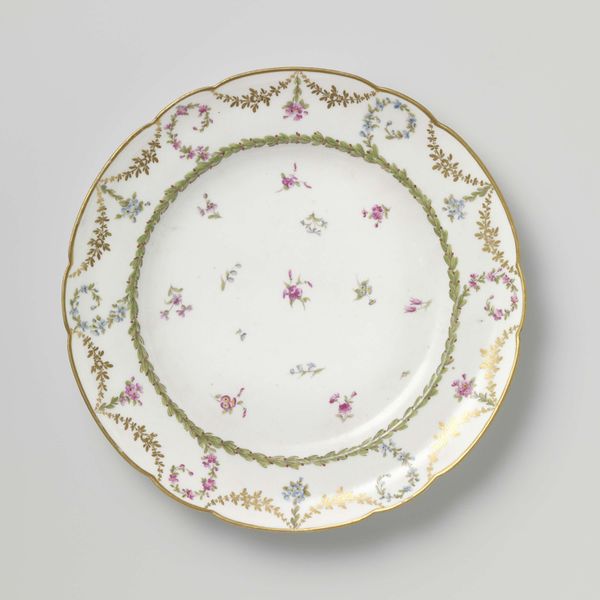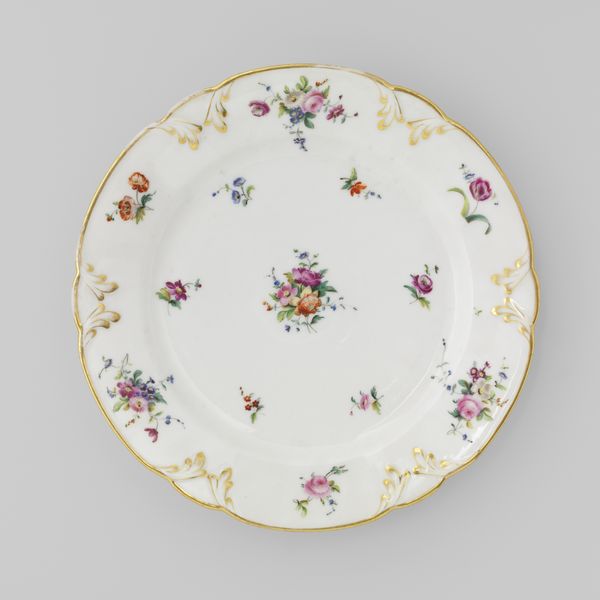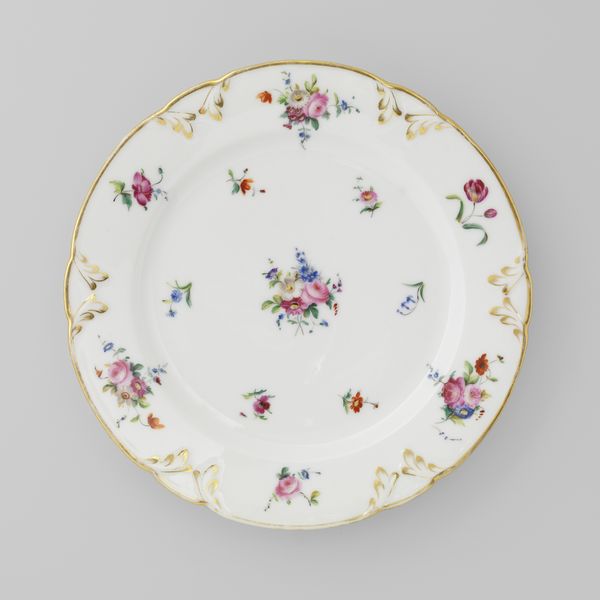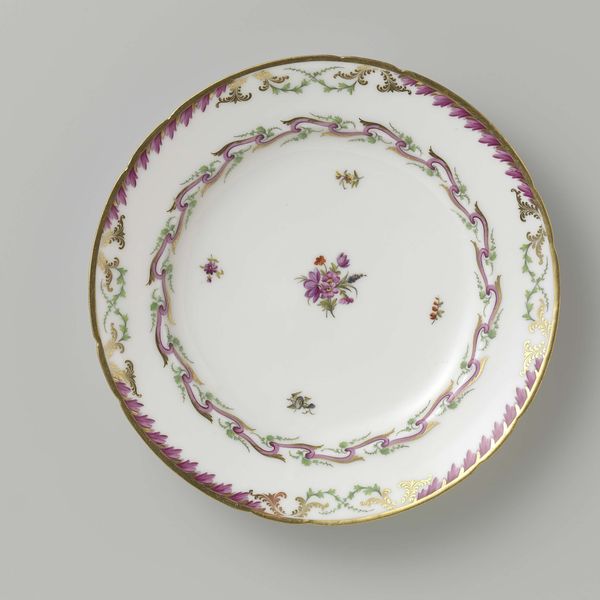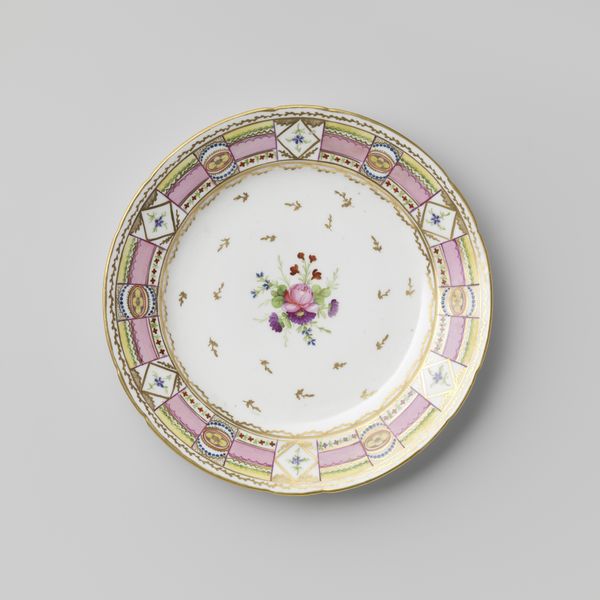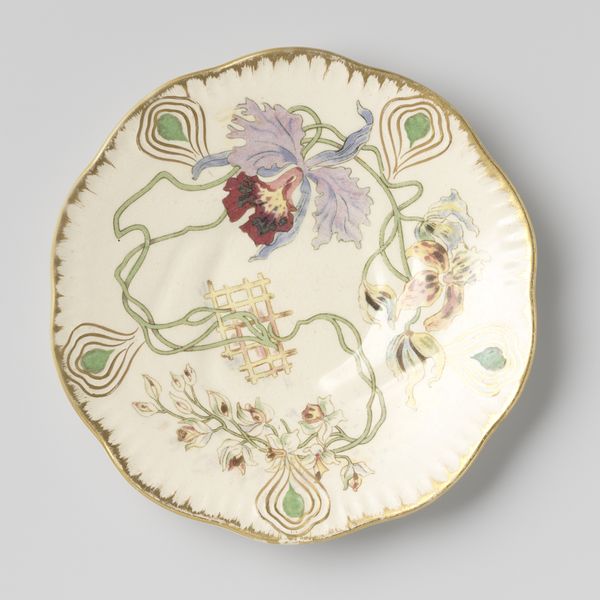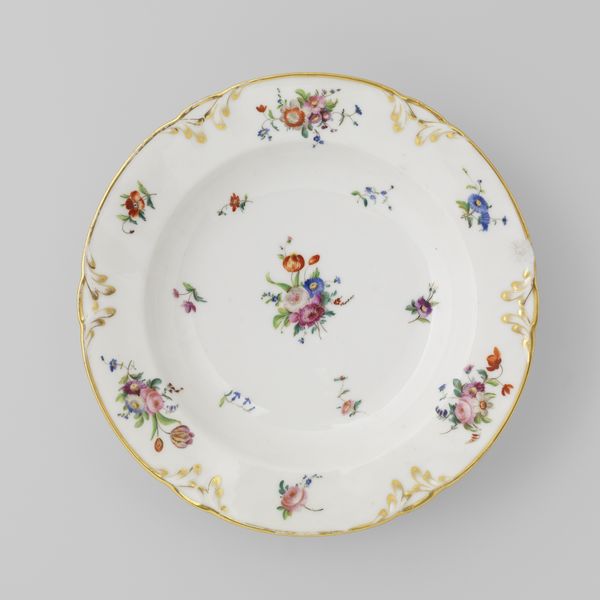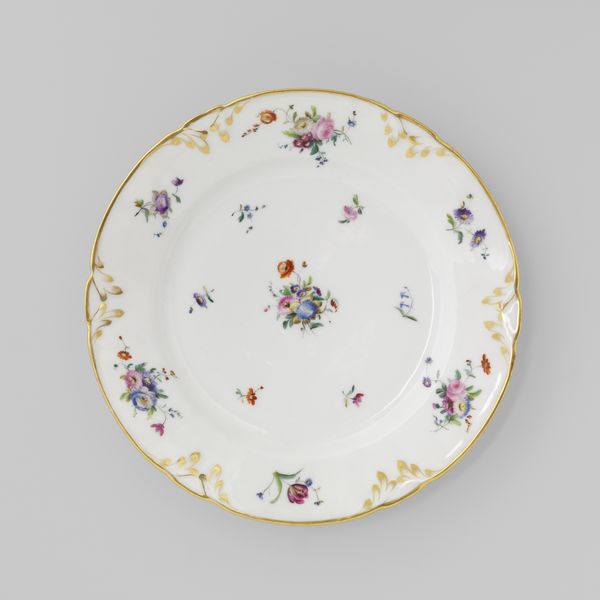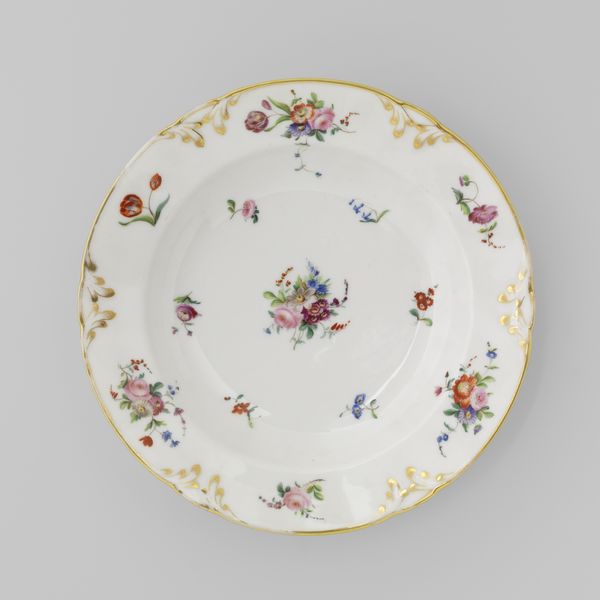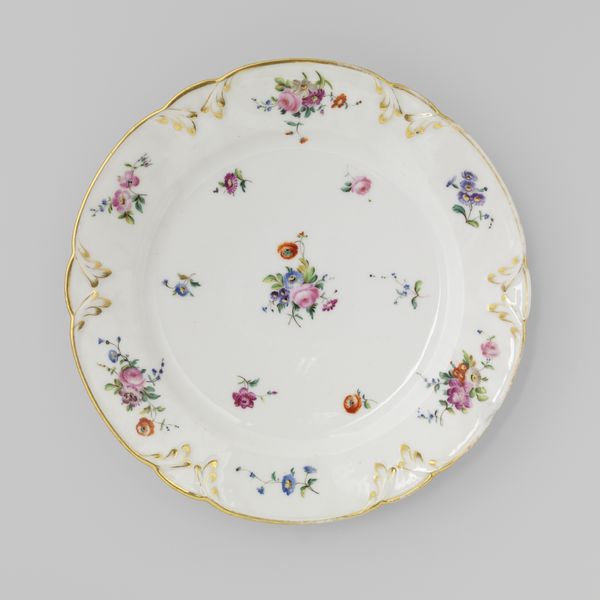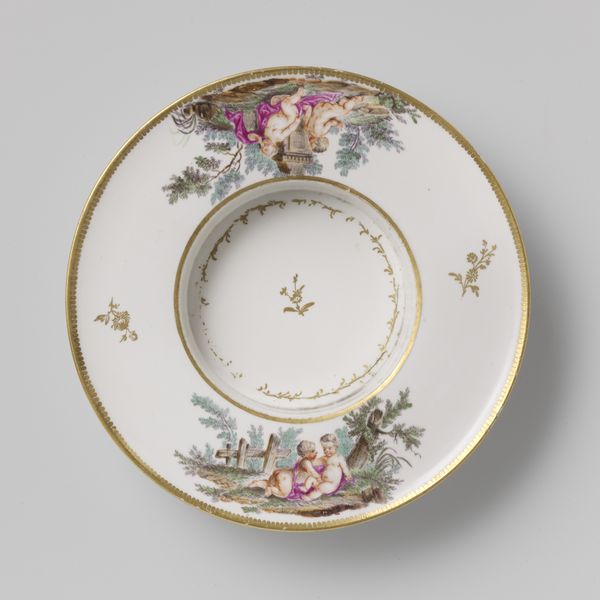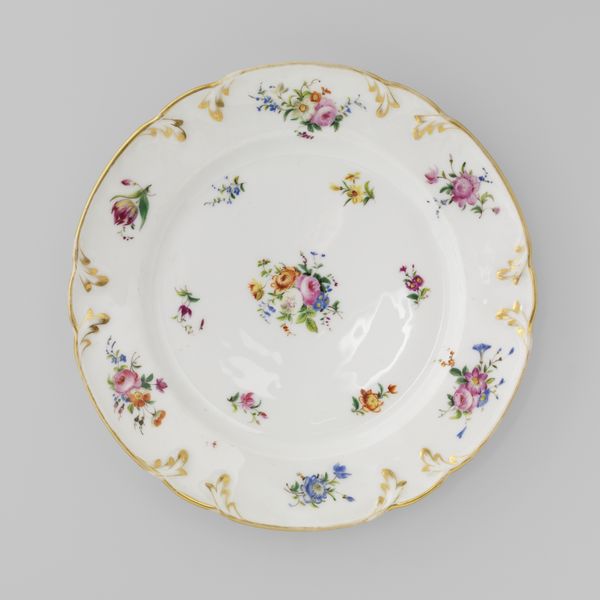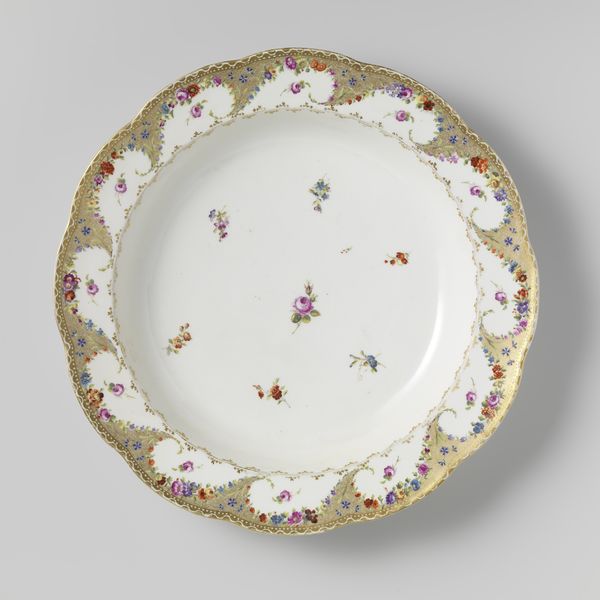
Onderschotel van een notenmand, beschilderd met strooibloemen en gouden biezen c. 1782 - 1784
0:00
0:00
Dimensions: height 3.4 cm, diameter 25.6 cm
Copyright: Rijks Museum: Open Domain
Editor: Here we have a delightful under-dish, part of a nut-basket set, crafted in Loosdrecht around 1782-1784. It’s stoneware, adorned with watercolour illustrations of scattered blooms and gold trim. I find the delicate details incredibly charming. What strikes you most about this piece? Curator: It whispers of simpler times, doesn't it? A fleeting moment captured in ceramic, holding perhaps a reflection of an actual wildflower arrangement, mirroring a fleeting glance of life! Porcelain during the Rococo period danced on the edge of frivolous artistry, its delicate forms belying the societal tensions bubbling underneath. Do you sense a hint of rebellion against the heavy formality of courtly life hidden in its lighthearted details? Editor: Rebellion? I hadn’t thought of it that way. It feels more like an escape to me. Like a pretty daydream. Curator: Daydreams can be potent fuel for change, darling! These scattered blooms suggest freedom, perhaps, from tightly controlled garden designs... Even this openwork edge creates the illusion of lightness and defies the material. It challenges gravity, right? Almost ethereal… Editor: I see what you mean. The cut-out border *does* make it seem less substantial. I never thought of porcelain as a canvas for social commentary. Curator: Art often camouflages its revolutionary whispers beneath layers of beauty. So next time you encounter a delicate bloom on porcelain, remember it might just be a tiny act of defiance blooming right before your eyes! Editor: Wow. I'll never look at porcelain the same way again. Curator: Good, then my work is done. Now let’s go look at some actual flowers. I am parched.
Comments
No comments
Be the first to comment and join the conversation on the ultimate creative platform.
